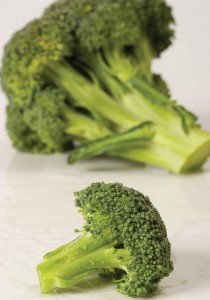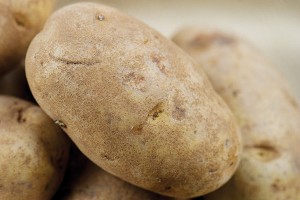The hard work you’ve put into your garden since spring has paid off. Your seedlings have grown strong and tall and you now have ripe fruits and vegetables with vibrant colors. You’re all ready to harvest your backyard crop.
Maybe you’re going to can green beans, freeze your tomatoes or dehydrate beets and herbs. Or, maybe you’re going to eat everything fresh instead. If that’s the case, you need to know how to keep your produce fresh for as long as possible.
Storing homegrown vegetables
Each vegetable requires a specific type of storage:
- Cool and dry (50-60 degrees F with 60% relative humidity)
- Basements are typically cool and dry
- Vegetables require ventilation
- Protect vegetables from rodents
- Cold and dry (32-40 degrees F with 65% relative humidity)
- Home refrigerators work well for keeping fresh produce, but usually for just a few days.
- At 40 degrees F, a refrigerator’s relative humidity is about 50-60%
- If vegetables aren’t kept in perforated bags, humidity will form condensation, which causes mold and bacteria to grow
- Cold and moist (32-40 degrees F with 95% relative humidity)
- Root cellars are cold and moist
- Vegetables need ventilation
- Protect vegetables from rodents
Here are 20 common vegetables grown in the garden, their storage requirements and expected shelf lives:
Asparagus — cold and moist for 2 weeks
Beets — cold and moist for 5 months
Broccoli — cold and moist for 2 weeks
Cabbage — cold and moist for 5 months
Carrots — cold and moist for 8 months
Cucumbers — store in perforated plastic bags in the kitchen at 55 degrees F for 1 week, or in the refrigerator for a few days
Eggplant — store in perforated plastic bags in the kitchen at 55 degrees F for 1 week, or in the refrigerator for a few days
Lettuce — cold and moist for 1 week
Cantaloupe — cold and moist for 1 week
Onions — cold and dry for 4 months
Peas — cold and moist for 1 week
Peppers — store in perforated plastic bags in the kitchen at 55 degrees F for 2 weeks
Potatoes — cold and moist, away from light, for 6 months
Snap beans — cold and moist for 1 week
Spinach — cold and moist for 10 days
Summer squash — store in perforated plastic bags in the kitchen at 55 degrees F for 1 week, or in the refrigerator for a few days
Sweet corn — cold and moist for 5 days
Radishes — cold and moist for 1 month
Red tomatoes — store in perforated plastic bags in the kitchen at 55 degrees F for 5 days
Watermelon — store in perforated plastic bags in the kitchen at 55 degrees F for 2 weeks
Sources: University of Minnesota Extension
Get more Great Recipes in your inbox each week by getting
Around the Table.
It's a FREE weekly e-newsletter all about food. Sign Up Today!


















